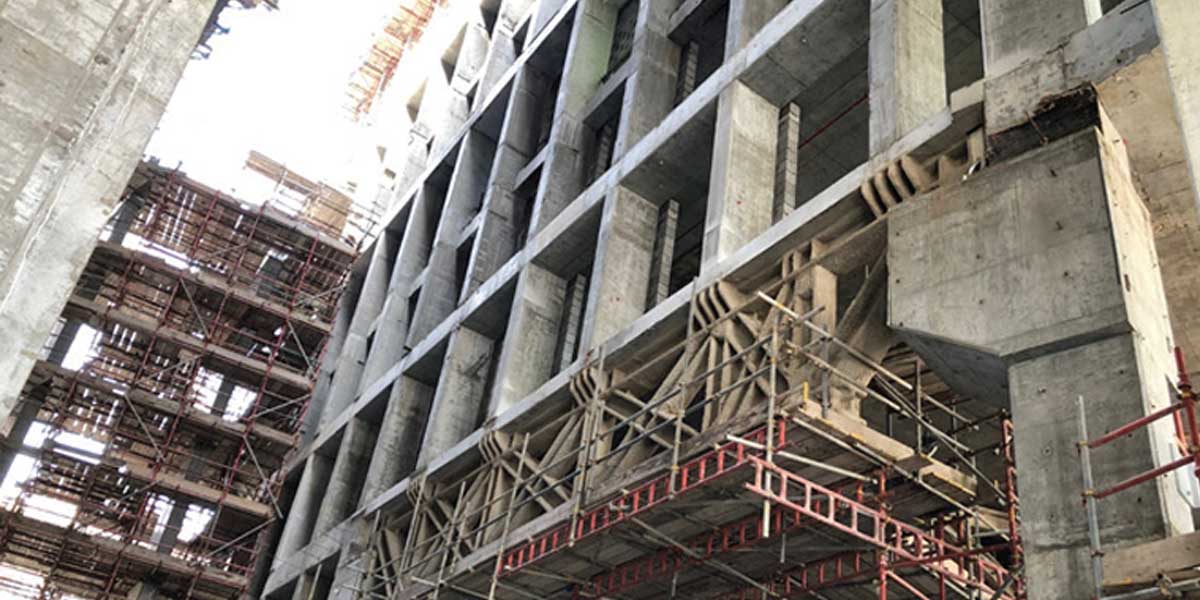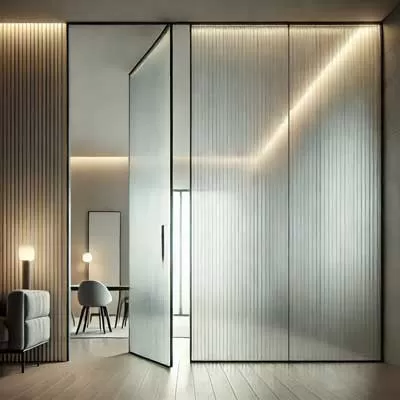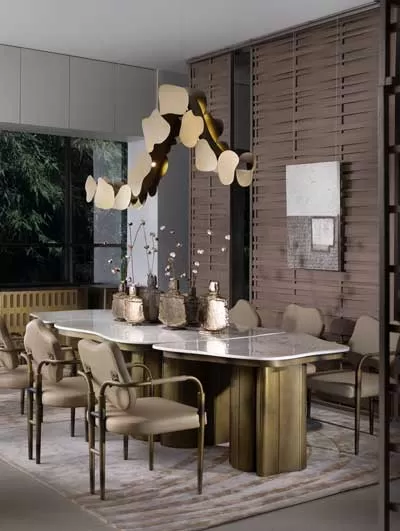Sructural steel accounts for less than
5 per cent of the steel consumed in India, says Abhijeet M Kulkarni, Country Director, Structures, Buro Happold.
Indeed, “in India, structural steel has so far only made inroads in prefabricated structures for being eco-friendly and a fast construction option; in speedy hassle-free economic tubular steel construction for airports, bus stands, railways and other infrastructure projects; and in stainless steel structures for maintenance and corrosion-free infrastructure and utility projects,” adds Dr Mukesh Kumar, Director, Steel Research & Technology Mission of India (SRTMI) under the aegis of the Ministry of Steel.
Why isn’t India enthused about
structural steel?
Why RCC predominates
The construction of most heavy buildings and facilities in India is in reinforced concrete because of the large availability of unskilled workforce in the country, comparative ease of construction, prolific availability of concrete and its unique property to be formed in any imaginable geometric shape, says Vijay Tripathi, Head (Structural Design), Shapoorji Pallonji.
Dr Kumar attributes the limited use of steel to the lower construction cost of reinforced cement concrete, 20-30 per cent less than steel-based construction in India, mainly on account of the use of low yield strength structural steel here. “Indian construction uses steel with a yield strength of around 250-400 N/mm2 as against the special steel produced in Japan with a yield strength as high as 790 N/mm2,” explains
Dr Kumar.
Although we have been working on a number of steel buildings in Southern India, a prevailing perception contrary to the general understanding is that steel buildings get finished late, opines Kulkarni. “Developers cite the shortage of skilled labour, the time spent in fire proofing and the limited number of experienced contractors as key reasons.”
It is a fact that structural steel construction needs highly skilled labour and equipment, and its procurement is associated with limited or protracted lead times, says Tripathi. “For instance, long span bridges, airport roofs and exhibition floors with minimal column intrusions, good examples of heavy structures best built in steel, usually necessitate steel ranging between 10,000 tonne and 40,000 tonne (or more for mega projects). Owing to the stringent completion timelines of most projects, this demand must be fulfilled within a span of
6-12 months.”
Acquiring such large quantities of steel within tight deadlines
is challenging.
The cost of the material itself deters steel construction,
adds Tripathi.
Developers tend to opt for construction materials and techniques that cost less upfront (less capex), says Kulkarni. “Hence, they avoid steel unless the design demands.”
Why mature markets build
In steel
In contrast to India, in other parts of the world like Japan, more than 80 per cent construction uses special steel of high strength and improved toughness, observes Dr Kumar.
Why’s that?
“Internationally, the use of steel has been on rise mainly to counter increased labour costs, utilise increased automation and computation engineering skills, the capability of parametric analysis of complex geometries, good quality of the finished end product and environmental-friendliness,” explains Kulkarni.“ Also certain designs demand structural steel, such as the dome at the Lourve Museum Abu Dhabi, Museum of the Future Dubai, Mall of Emirates Ski Slope Dubai, Jewel Changi Airport Singapore, Morpheus China, Hamad International Airport Doha, National Museum Doha, etc.”
Studies by Buro Happold comparing reinforced concrete and structural steel in tall buildings on a number of parameters show that steel buildings provide a distinct advantage in increase in the lettable areas and hence revenue (on an average 10 to 12 per cent increase in lettable area is possible), environment-friendliness and sustainability, wind and seismic ductile performances, quality control of material and connections, speed of construction and end of life scrap value.
“Using high strength steel makes the overall structure lighter and the cost drops below RCC construction,” says Dr Kumar. “Steel-based construction provides additional security in the face of natural calamities like earthquakes.”
Structural steel offers high speeds of construction, much thinner and lighter sections offering sleeker aesthetic views, and a substantial reduction in the self-weight of the structure with a high load resistance to self-weight ratio, observes Tripathi.
Change is in the air ?
Kulkarni expects the use of steel in tall buildings in India to increase, and for the country to see more composite (steel and concrete together) tall buildings, in line with the global trend. “An encouraging sign is that a number of our clients are asking us to test composite construction solutions to enjoy higher lettable area (and thus revenue),” he says. “A few new entrants in the contracting world are geared up to work in steel, which will lead to more composite or steel projects in the near future.”
What would help (this cause) is if manufacturers in collaboration with fabricators and erectors run road shows and seminars to share overseas experiences, and run boot camps to train workers on efficient ways to handle steel, recommends Kulkarni.
“To push the use of structural steel, we need to focus on the lifecycle cost,” says Dr Kumar. “Change will happen only when tenders specify the lifecycle cost as an evaluation criterion, and bids are evaluated accordingly. We have a committee in place to bring about this change in the right places.”
Independent steel intensive buildings and steel bridges are slowly taking their own space but as a country we still have a long way to go, opines Rajib K Paul, Director, National Institute of Secondary Steel Technology. “This is why our per capita steel consumption is so low. The use of steel in construction would increase if we focused on the lifecycle cost of the built environment and infrastructure. INSDAG is working to slowly move India towards more steel usage.”
Effectively building in steel
Construction in steel can be made effective by pre/early ordering standard hot-rolled sections based on the preliminary design, suggests Tripathi. “Fine tuning at the final design stage can be done by welding plates to
such sections.”
Using full built-up sections made with multiple steel plates welded together is another way to build in steel, continues Tripathi. “Plates are more readily available than standard sections, hence reducing lead time. Of course, the downside is the laborious fabrication time and material wastage.”
Lastly, Tripathi points out that it can help to use the E250 grade steel for lighter and more readily available sections such as roof purlins, supports for services, lateral bracings and other minor elements having lesser strength demands.
A balance would need to be established among the above strategies based on the project timelines, the quantity of steel involved, the fabrication resources and the area expertise.


















